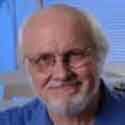The Learning Screen
¶ 1 Leave a comment on paragraph 1 0  ABSTRACT: Networked art, new media innovations, and the Internet as a cultural phenomenon in general are manifestations of a civilizational shift in the apparatus (social machine) from literacy to electracy. The historical analogy (grammatology) with the previous (and still ongoing) shift from orality to literacy shows that the shift is gradual, with many transitional features, but ultimately produces a new dimension of experience in every area of the lifeworld (technology, institutions, individual and collective identity behavior). This essay addresses the situation of teaching electracy in a literate institution, describing a pedagogy for bootstrapping literate practices into an electrate skillset. What is the fundamental practice (logic, rhetoric, poetics) of thinking and communicating native to online learning? This reasoning is separate from any software or hardware techniques, and concerns an aesthetic operation of organizing information into understanding relative to action using figural structures guided by affective experience. Electrate categories and abstractive compressions function not as transcendent universals but as proportional analogies exploiting patterns of repeating signifiers across all modalities. The “ratio” of this figure is open to vanguard experiment. The essay samples this pedagogy at three levels: undergraduate literature majors; graduate media studies; collaborative arts research.
ABSTRACT: Networked art, new media innovations, and the Internet as a cultural phenomenon in general are manifestations of a civilizational shift in the apparatus (social machine) from literacy to electracy. The historical analogy (grammatology) with the previous (and still ongoing) shift from orality to literacy shows that the shift is gradual, with many transitional features, but ultimately produces a new dimension of experience in every area of the lifeworld (technology, institutions, individual and collective identity behavior). This essay addresses the situation of teaching electracy in a literate institution, describing a pedagogy for bootstrapping literate practices into an electrate skillset. What is the fundamental practice (logic, rhetoric, poetics) of thinking and communicating native to online learning? This reasoning is separate from any software or hardware techniques, and concerns an aesthetic operation of organizing information into understanding relative to action using figural structures guided by affective experience. Electrate categories and abstractive compressions function not as transcendent universals but as proportional analogies exploiting patterns of repeating signifiers across all modalities. The “ratio” of this figure is open to vanguard experiment. The essay samples this pedagogy at three levels: undergraduate literature majors; graduate media studies; collaborative arts research.
¶ 2 Leave a comment on paragraph 2 0 To comment on a paragraph, simply click on the speech bubble next to the paragraph number on the right.
» Read | Write This Chapter ›
¶ 3 Leave a comment on paragraph 3 0  BIOGRAPHY: Gregory L. Ulmer is Professor of English and Media Studies at the University of Florida, where he teaches courses in Hypermedia, E-Lit, and Heuretics. He is Joseph Bueys Chair in the European Graduate School, Saas-Fee, Switzerland, where he teaches a summer seminar on electracy and heuretics; and coordinator of the Florida Research Ensemble, a creative arts research group first formed in the late 1980s, focusing on choragraphy through “Imaging Place” since the mid 1990s.
BIOGRAPHY: Gregory L. Ulmer is Professor of English and Media Studies at the University of Florida, where he teaches courses in Hypermedia, E-Lit, and Heuretics. He is Joseph Bueys Chair in the European Graduate School, Saas-Fee, Switzerland, where he teaches a summer seminar on electracy and heuretics; and coordinator of the Florida Research Ensemble, a creative arts research group first formed in the late 1980s, focusing on choragraphy through “Imaging Place” since the mid 1990s.
¶ 4 Leave a comment on paragraph 4 0 Ulmer’s books include: a grammatology trilogy — Applied Grammatology, 1985; Teletheory, 1989; Heuretics, 1994; and a second trilogy on the virtual consultancy known as the EmerAgency which applies grammatology and heuretics to the invention of electracy, especially concerning the practices of aesthetics, ethics and politics in the conditions of dimension pollution that Paul Virilio describes as the dromosphere (society of the spectacle). The published works are Internet Invention (2003) and Electronic Monuments (2005). The final installment in progress is Avatar Emergency.
¶ 5 Leave a comment on paragraph 5 0 Ulmer is theorist for E, a collaboration with colleagues in the US and Canada investigating text mining and visualization for a poststructural web ontology.
¶ 6 Leave a comment on paragraph 6 0 To comment on a paragraph, simply click on the speech bubble next to the paragraph number on the right.
» Read | Write This Chapter ›
¶ 7 Leave a comment on paragraph 7 0






